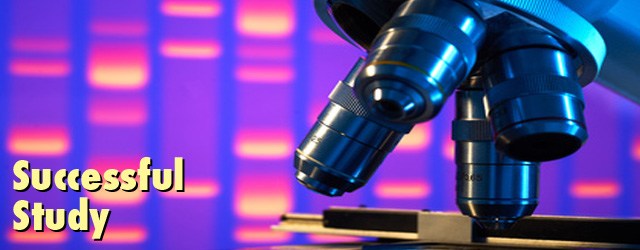UAMS Researchers Reach Milestone In Effort To Break Meth Addiction
by December 20, 2012 4:17 am 136 views

A biomedical research company at UAMS has taken a crucial step in advancing a medication that may help methamphetamine users fight their addictions.
InterveXion Therapeutics LLC and the University of Arkansas for Medical Sciences (UAMS) have successfully completed a Phase I trial of 40 volunteers.
The medication is expected to significantly reduce or prevent the euphoric rush that drug users crave by keeping methamphetamine in the bloodstream and out of the brain, where the drug exerts its most powerful effects.
InterveXion’s medication, named ch-mAb7F9, is a monoclonal antibody, a scientific immune cell approach that has been used in advancing a number of successful cancer treatments.
In the Phase I trial, the volunteers — who did not use methamphetamine — received the medication over the past eight months and experienced no serious side effects.
“While we still have lots of work to do, this is a significant milestone for this research,” said Brooks Gentry, M.D., a UAMS professor and InterveXion’s chief medical officer who is overseeing the clinical trial phase. InterveXion is a UAMS BioVenture business incubator company.
“Many experimental drugs fail during the first phase of a clinical trial, so we’re excited that we can now look forward to testing in methamphetamine users who want help reducing their meth dependence,” Gentry added.
THE METH EFFECT
Methamphetamine is a highly addictive synthetic stimulant that affects the pleasure centers of the brain. It is considered one of the most highly addictive drug substances known.
According to the Substance Abuse and Mental Health Services Administration, there were 439,000 methamphetamine users in the U.S. in 2011. New methamphetamine users numbered 133,000.
As many as 12.6 million Americans have used methamphetamine and by one widely distributed RAND study, meth abuse has an estimated $23.4 billion economic impact in the U.S. annually.
The economic costs weighed in the study looked at the burden of addiction, premature death, drug treatment, aspects of lost productivity, crime and criminal justice, strain on health care resources, production and environmental hazards, and child endangerment.
In 2010, more than 100,000 were admitted to drug abuse treatment with methamphetamine as their primary substance of abuse. In addition, there were 54.9 emergency department visits per 100,000 population aged 21 or older involving methamphetamine use.
WHAT’S NEXT
The volunteers in the study results released this week received doses that ranged from 0.2 to 20 mg/kg. They will continue to be followed for 21 weeks and results from a Phase 1a study are expected in mid-2013.
The next steps in the development of the medication include further non-clinical safety testing followed by a Phase 1b clinical safety trial in current methamphetamine users.
UAMS said when it has received final approval, the antibody could be given as an integral part of a methamphetamine user’s complete treatment program, which consists of counseling and possibly other medications to reduce craving. This market aims to prevent a relapse to meth addiction.
The drug could also be used in emergency room settings to treat overdose victims, but mainly as a starting point for getting a meth user into a treatment program. According to InterveXion’s web site, it requires several weeks to generate effective antibody levels.
Funding for the project was awarded to UAMS and InterveXion from the National Institute on Drug Abuse (NIDA). Additional support was given by the UAMS Translational Research Institute. NIDA has backed the development, manufacture and toxicology testing of this medication through previous grants to InterveXion and UAMS.
InterveXion has licensed the technology for anti-methamphetamine antibody products from UAMS and is working closely with the university during product development.
